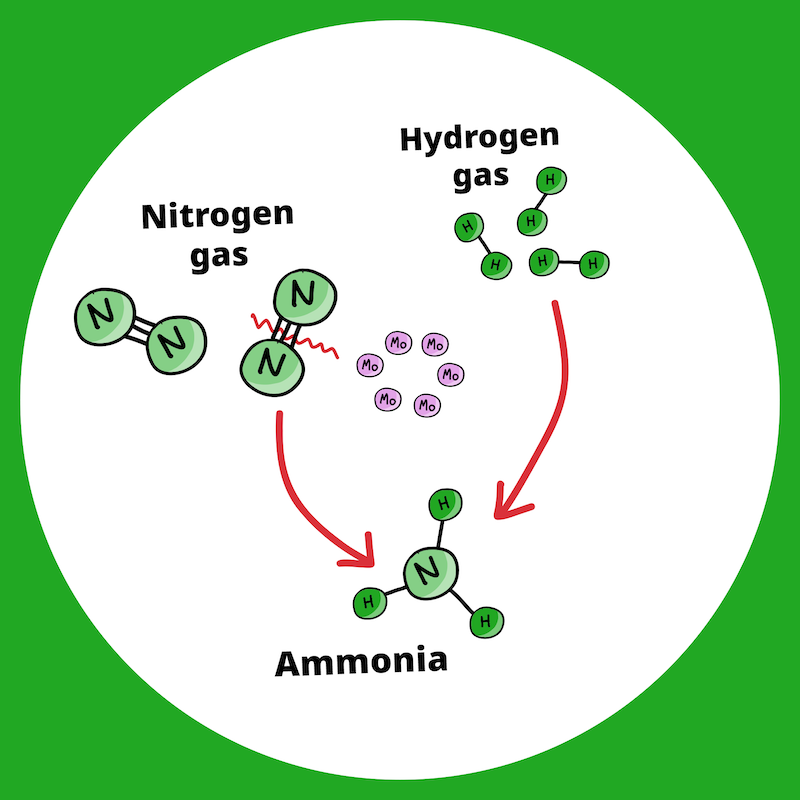Apr. 22, 2024 Press Release Chemistry
Energy-friendly ammonia production for fertilizers and alternative fuel
Researchers led by Satoshi Kamiguchi at the RIKEN Center for Sustainable Resource Science (CSRS) in Japan have discovered a greener way to produce ammonia, an essential compound used in fertilizers. The study, published in the scientific journal Chemical Science, describes a new catalyst that works stably at relatively low temperatures, thus reducing the amount of energy and money needed to synthesize ammonia. Because ammonia is an excellent way to safely store hydrogen, as well as an excellent alternative fuel in its own right, this discovery will make it easier to switch from fossil fuels to a carbon-neutral and green-energy economy.
Fertilizers are a way to provide extra nitrogen to plants, which helps them grow and increases crop yields. The nitrogen in fertilizers comes from ammonia, which is made by breaking apart hydrogen (H2) and nitrogen (N2) molecules and joining the individual elements together into ammonia gas (NH3) through the Haber–Bosch process. The reaction requires extremely high pressure and temperatures, and an iron catalyst.
The extremely high pressure and temperatures—about 200 atm and 500°C (932°F)—needed for the reaction require a large amount of energy. Because ammonia is so widely used in fertilizers and other industries, worldwide production thus consumes a huge amount of energy. To help reduce ammonia’s energy footprint, the RIKEN CSRS researchers have developed a more eco- and energy-friendly reaction that can proceed stably at much lower temperatures without becoming deactivated.
The biggest hurdle was breaking down nitrogen gas because there is a strong triple bond between the two nitrogen atoms within a molecule of nitrogen gas. “The trick was to use ultrasmall molybdenum metal particles prepared from a hexanuclear molecular metal halide cluster, which was then activated with hydrogen gas,” says Kamiguchi. Once activated, multiple molybdenum atoms work together to quickly break the strong nitrogen-nitrogen bonds and drive ammonia synthesis. When tested, this new method was able to create ammonia from nitrogen and hydrogen gases continuously for more than 500 hours at 200°C (392°F), greatly reducing the required temperature when using the conventional Haber–Bosch process.
In addition to impacting the fertilizer industry, the new way of producing ammonia could indirectly help reduce carbon emissions if ammonia fuel was used worldwide. Ammonia fuel can be burned directly in internal combustion engines without emitting any CO2, but has not become a practical alternative because of the high-energy Haber-Bosch process. One of the advantages of the new method is that it would allow lower-energy ammonia production, which would greatly reduce carbon emissions if ammonia fuel is used on a large scale.
At the same time that ammonia is storing nitrogen for fertilizers, it’s also storing hydrogen. This makes it an ideal carrier for hydrogen, which some consider to be the ideal source of energy. When the stored hydrogen is needed, it can be released from ammonia and used as fuel without emitting carbon dioxide.
“Replacing the Haber-Bosch process with our new method should result in worldwide energy-saving,” says Kamiguchi. “If ammonia fuel and hydrogen fuel are used in much larger amounts, vastly reducing the energy needed to synthesize ammonia will lead to lower CO2 emissions and help prevent further global-warming.”
One problem still remains. The hydrogen needed to make ammonia is itself still produced using fossil fuels, and in the necessary large quantities would also lead to tremendous CO2 emissions and energy consumption. Kamiguchi therefore notes, “When our catalyst system is combined with green H2 production from renewable energy, the emission of global-warming CO2 could be reduced even more.”
Currently, the research team is focusing on adding promoters to the molybdenum-based catalyst that will make ammonia synthesis more efficient.
Rate this article
Reference
Contact
Satoshi Kamiguchi, Senior Research Scientist
Advanced Catalysis Research Group
RIKEN Center for Sustainable Resource Science
Adam Phillips
RIKEN International Affairs Division
Tel: +81-(0)48-462-1225
Email: adam.phillips [at] riken.jp

